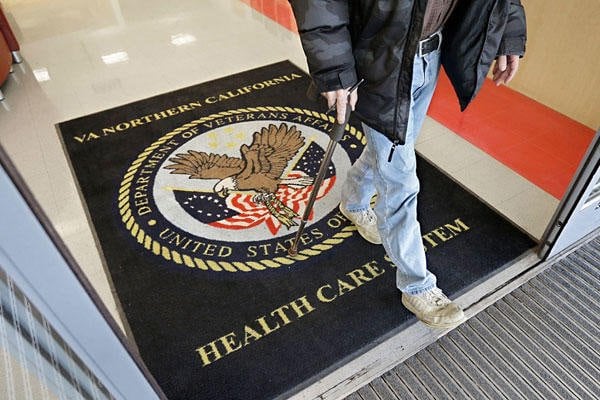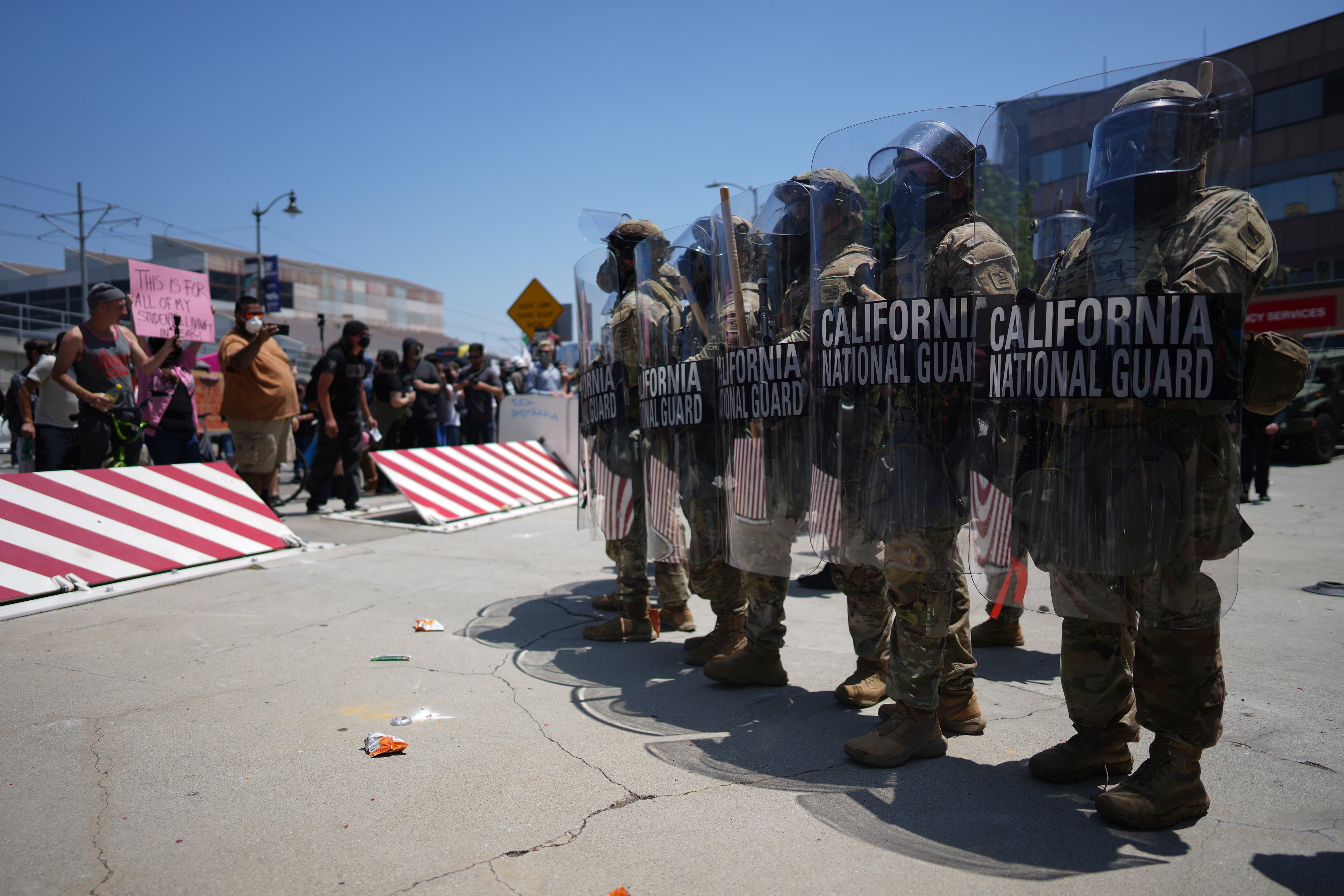In preparation for a future war where Marine infantry platoons take on the responsibilities currently at the company level, the Corps is launching a new experimental School of Infantry curriculum that will teach aspiring grunts 21 new lessons, or “behaviors.”
The new curriculum was built from the ground up during the past year and a half, with sergeants and staff noncommissioned officers at the two infantry schools taking the lead.
“This has been a full effort from the service, particularly our brethren at SOI East,” Chief Warrant Officer Amatangelo “AJ” Pasciuti, the gunner for Infantry Training Battalion–West, said in a phone interview. “The service directed us to operate off of a mission type order, build a Marine that matches these principles.”
The new 14-week course will add five weeks to the current course required to pass before becoming a new 0311.
But that timetable is not set in stone.
“I think there is appetite in the service to look at expanding it to more than 14 weeks in the future,” Col. Coby Moran, commander for School of Infantry–West, said in the phone interview.
School of Infantry–West kicked of the first iteration of the pilot program on Jan. 25, with SOI–East in April.
“At present, both SOIs will run 2 pilot courses (4 total), staggered from the other school, so that we can learn and grow from each other (and appropriately modify the POI),” Maj. Edward Arrington, operations officer for School of Infantry–East, said in an email about the course.
In addition to the timeline, the exact number of new behaviors taught is still in flux.
“These behaviors may change over the four pilot course iterations at SOI-W and SOI-E as Fleet Marine Force feedback informs the program of instruction to meet the Commandant’s intent,” said spokesman Capt. Sam Stephenson.
Here are 11 of the newly trained behaviors:
· Combat orders
· Signature management
· Employing anti-armor weapons
· Human performance
· Employing C4 systems
· Employing grenade launchers
· Employing machine guns
· Employing tactical combat casualty care
· Conducting fire and movement
· Increased aquatic confidence
· Operating based on a task, mission and commander’s intent from an operation’s order
So far 150 Marines are slated to run through the course. The Marines will be broken down into 14-Marine squads with one instructor per-squad.
The extended time and reduced student-to-instructor ratio will go to good use teaching Marines more general infantry skills, including “increased aquatic confidence, training on multiple types of communication along with repetitions on more weapons so they understand their part in the greater picture of the battlefield from day one.”
At least for now, though, Marines will spend less time firing their standard M-27s during the training.
“What we’re fundamentally doing is changing how we teach these weapons systems themselves,” Pasciuti said.
“Across every single weapon system that we’re teaching, they’ll learn the fundamentals how, they’ll learn the employment of the weapon system and then they’ll get to experiment with the employment in real life, live fire and force on force situations.” Pasciuti added.
Timeline
The extended course will be split into four phases.
The first phase is nine weeks and focuses on teaching Marines the skills they need with plenty of oversight from their instructors.
The remaining three phases will come with more freedom for the Marines to fail and succeed on their own and will focus on teaching Marines how to combine and implement these skills in increasingly complex scenarios.
“I can’t teach a class on how to operate by yourself, I have to as it progresses take off the controls that we as a staff put on them,” Lt. Col. Walker Koury, the Infantry Training Battalion–West commander, told Marine Corps Times. “They will have to make mistakes and learn from them.”
Phase two, which lasts one week, will cover patrolling at the 0311 level, culminating in two days of instructor-led force-on-force fights between the different platoons in the training.
During the unscripted force-on-force events Marines will use a mix of blanks, paintball simunition rounds and electronic monitoring devices to register hits.
After each encounter the instructors will have an in-depth after-action report with their 14-man squads going over what worked and what failed.
During the three-week phase three, Marines will learn advanced fire and maneuver concepts such as how to integrate heavy weapons and machine guns into the patrol and how to operate in different environments.
They will also learn how to set up an “effective defense with integrated patrolling,” a slide about the changes said.
The Marines will then put all they learned together in a multiday operation that will have squads transitioning from defense to attack to standard patrols while facing off against other squads in the training cycle.
The final phase will be a one-week capstone event where the Marines are placed on a notional expeditionary advanced base and tasked with completing missions.
Here is the full schedule of events, based on slides shared with Marine Corps Times:
· Week one: Includes a class on where each infantry Marine fits into expeditionary advanced base operations and the 2030 fight and why each skill is essential; a knowledge retention test; philosophy of war fighting; combat orders; signature management (administrative); and social media footprint.
· Week two: Employing service rifles; conducting field craft (field hygiene, ind camouflage); employing C4 systems with very high frequency radios and signature management.
· Week three: Advanced infantry marksmanship at greater range and conditions; employing anti-armor weapons; physical, mental and social resiliency training.
· Week four: Conducting aided defense advanced GPS, map and compass, along with unaided, celestial and sun improvised compass, land navigation skills. Work on visual and electromagnetic signature concealment.
· Week five: Marines will learn observation skills; tracking and counter-tracking techniques; friendly and enemy trackable signatures.
· Week six: Marines will learn the cycle of the infantry Marine and how to conduct fire and movement; employ grenade launchers; employ anti-armor weapons and employ machine guns.
· Week seven: Marines will learn to conduct fire and to maneuver, day and night, with the service rifle and the medium machine gun and conduct surveillance.
· Week eight: Marines will learn how to operate and employ the high frequency radios, and understand ways to mitigate the radio signature, alongside more philosophy of war fighting training.
· Week nine: Marines will understand how to receive and analyze a combat order, specifically receiving a full five paragraph order.
· Week 10: Marines will incorporate all skills learned up to this point in the patrolling exercise culminating with two days of student-led, instructor-guided force-on-force fights.
· Week 11: Combining all learned skills the Marines will conduct both day and night squad offensive operations.
· Week 12: Marines will use what they’ve learned to construct an effective defense with integrated patrolling effort and then conduct blank fire force-on-force fights to test each position.
· Week 13: Marines will build upon weapons employment, offensive, defensive and patrolling fundamentals while in an urban environment, which culminates with two days of student-led, instructor-guided force-on-force fights.
· Week 14: The capstone event has Marines spending five days in a simulated expeditionary advanced base, completing missions that they may see in combat. Each event will be student led, with instructors there for safety purposes and instructional after-action reports.
The capstone is meant to recreate the Marine Corps Combat Readiness Evaluation, or MCCR, that they would see in the fleet before deploying.
“Each Marine must continuously use signature management, land navigation, individual movement techniques, and field skills to be successful,” a slide from the event said.
The students will be completely in charge of planning and completing their assigned tasks, with instructors monitoring on the side.
“The whole idea behind the capstone is to create what believe to be some version of the future operating environment for this Marine,” Koury said.
“Let’s get these Marines in the mindset of what they might face when they are, on the edge of the battlefield.”
Correction: The article originally said the Marines were training on M-4s. They are using the M-27 infantry automatic rifle.





